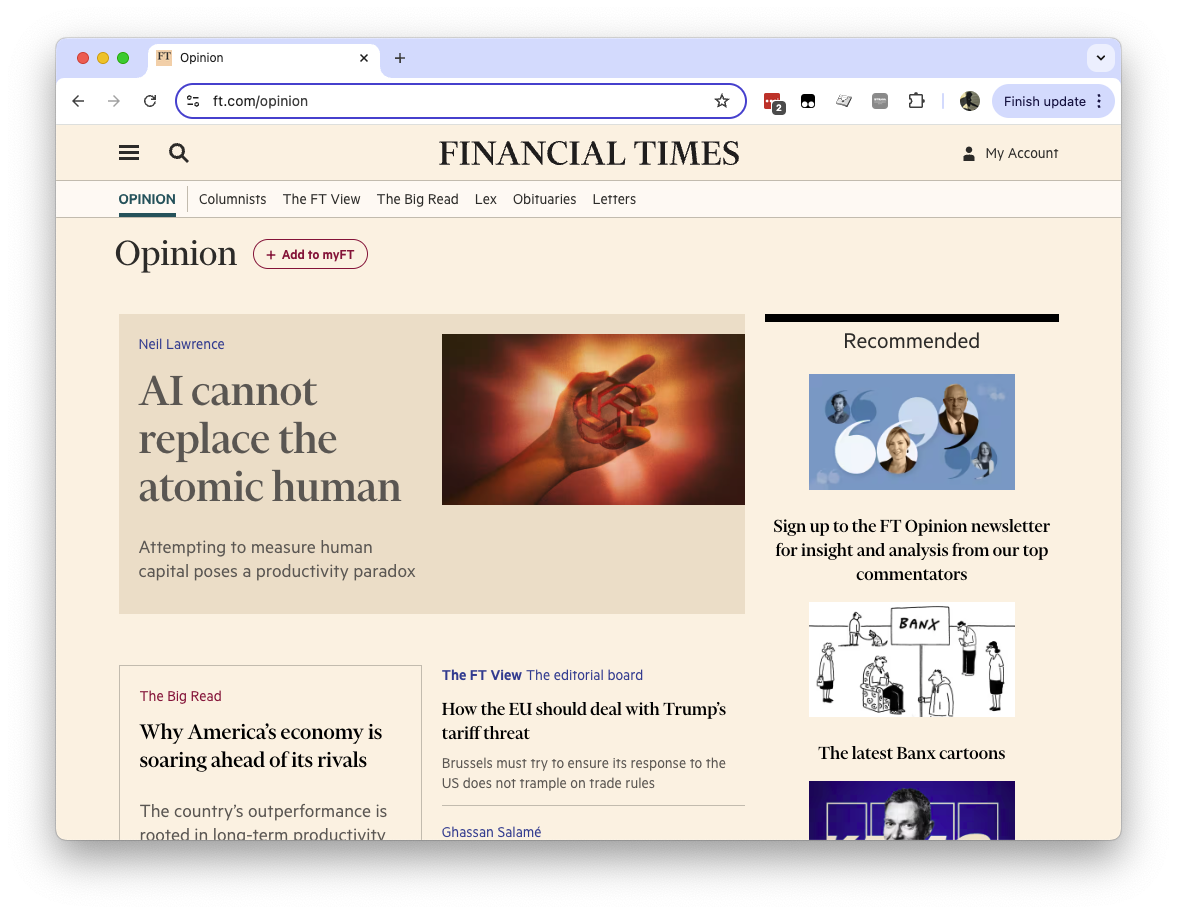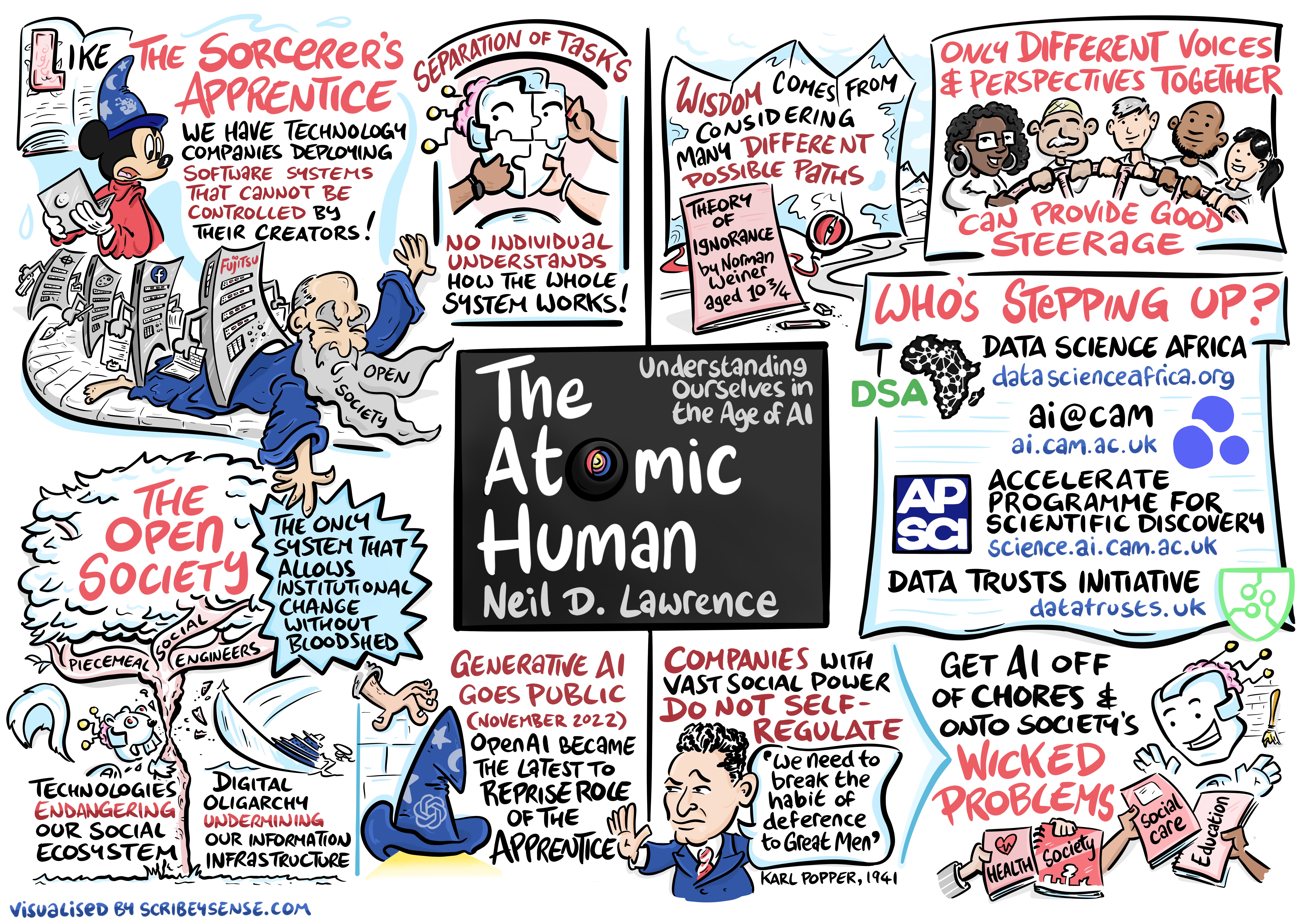AI Cannot Replace the Atomic Human
Attempting to measure human capital poses a productivity paradox
The Outlook for the Economy and Finance, Villa d’Este, Cernobbio, Italy
Artificial General Vehicle

Philosopher’s Stone

The Attention Economy
Herbert Simon on Information
What information consumes is rather obvious: it consumes the attention of its recipients. Hence a wealth of information creates a poverty of attention …
Simon (1971)

.
Human Capital Index
- World Bank Human Capital Index 2020
- Italy outperforms USA and China
- Measures health and education
Productivity Flywheel
Inflation of Human Capital
- Strength in Human Capital double-edged sword.
- Automation creates efficiency.
- But skills risk becoming redundant.
Inflation Proof Human Capital
- Does automation totally displace the human?
- Or is there an irreducible core?
Uncertainty Principle
- Machines rely on measurable outputs
- Quantified aspects of humans easier to automate
- Essential aspects of humanity are the hardest to measure
- Implies: atomic human is difficult to quantify
Homo Atomicus
- Where we have homo economicus the machine can step in.
- Quantitative vs Qualitative gap
- Homo atomicus is …
- Not in A-level results
- Not in hospital waiting lists
- In the quality of human interaction
New Productivity Paradox
- Current productivity flywheel relies on measurement to translate innovation into productivity.
- Without measurement how does the wheel spin?
What’s the solution?
–>
Supply Chain of Ideas
- Ideas flow from creation to application like physical supply chains
- Parallels with traditional economic supply chain management
- Particularly relevant for IT and AI solutions
Supply Chain of Ideas
- Current imbalance between supply and demand sides
- Mismatch between macroeconomic interventions and microeconomic need
- Over-Focus on solutionism
- technologies/companies
- Under-focus on real-world needs … disconnect between government and citizens … disconnect between companies and customers
Supply Chain of Ideas
- Need to map idea problems demand to idea supply
- Need to understand … problems (demand) … current “stock” of solutions (supply)
- Requires active management of idea resources
- Shape supply to meet demand
AI cannot replace atomic human

Attention Reinvestment Cycle

Cromford

Distretti Industriali
- 18th Century Emilia Romagna: Silk, Paper
- The Black Country
- Exhibit: Strength in Community Strength in Diversity Poor economies of scale
- Requires: Strength in Europe

Example: Cambridge Approach
ai@cam

How ai@cam is Addressing Innovation Challenges
- A-Ideas (across 20 departments)
- Policy lab (with Bennett, Minderoo)
- HPC Pioneer projects (with RCS, C2D3)
- Accelerate programme (Schmidt Sciences funded)
Thanks!
book: The Atomic Human
twitter: @lawrennd
newspaper: Guardian Profile Page
blog posts:
References
Simon, H.A., 1971. Designing organizations for an information-rich
world. Johns Hopkins University Press, Baltimore, MD.